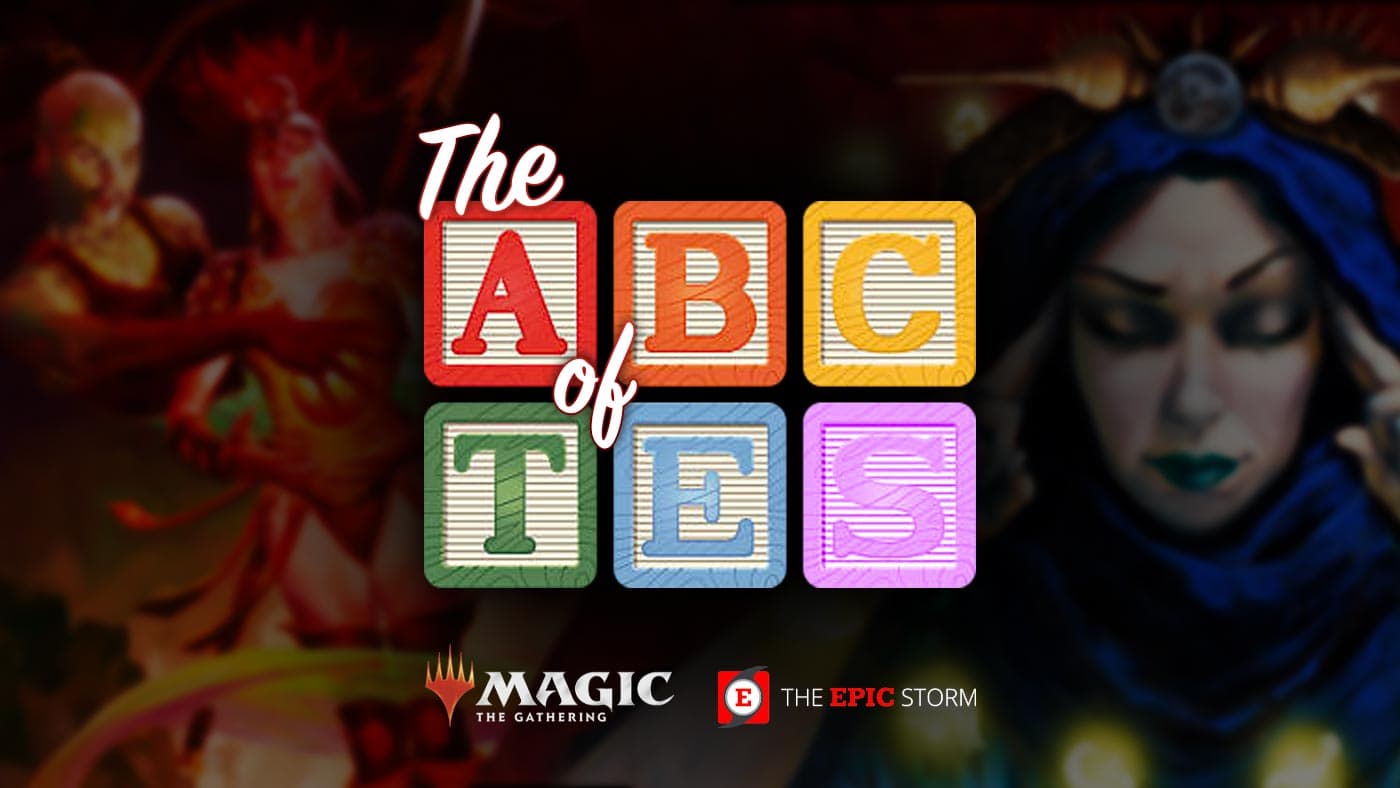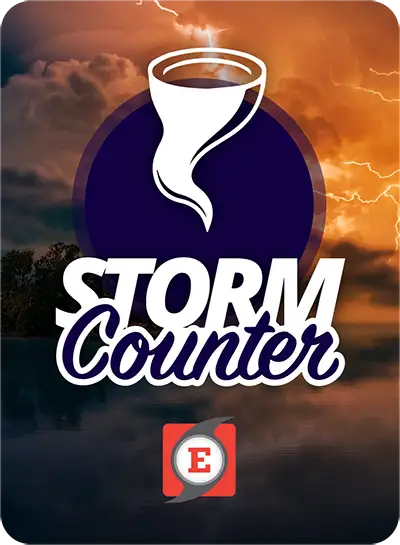Engines
[[Ad Nauseam|]]
The goal of any engine card in a Storm deck is the same: to draw cards and generate card advantage. One of the reasons why The EPIC Storm is so powerful is because it has a myriad of engines to choose from for the right situation. Picking the right one in any given situation can be hard, however. The simplest heuristic to use is to pick the one that draws the most cards. TES is designed to win the game as fast as possible through the engine that can draw the most cards with a reasonable amount of protection. This is why the deck is built around [[Ad Nauseam]]. It is the cheapest way to draw a lot of cards quickly.
Drawing Cards
[[Peer into the Abyss|]]
[[Galvanic Relay|]]
[[Echo of Eons|]]
The best engine to go off with is the one that draws the most cards. This is why [[Peer into the Abyss]] is the most powerful engine in the deck. It always draws close to 25 cards and is not that life total dependent. Despite not being able to cast [[Peer into the Abyss]] at one life, it always draws the same number of cards regardless of life total. The reason why it is not the primary engine of the deck is simply because it is too expensive to be reliable to cast fast enough. There is also a minor downside of [[Peer into the Abyss]] literally drawing cards, which means that [[Narset, Parter of Veils]] and similar effects can stop it.[[Ad Nauseam]] is the face of the deck and is the engine that The EPIC Storm uses most often
(about 40 percent of the time). Most of the deck building is based around keeping the average mana cost as low as possible. Currently, the average mana value of the deck is 0.85, which means that one is expected to draw 1.18 cards per life. The other thing to note is that the highest mana value card in the deck is [[Echo of Eons]] at six. When casting [[Ad Nauseam]], barring any burn spells, it is free to always go to six. [[Ad Nauseam]] is life total based, meaning that being at too low of a life total can make [[Ad Nauseam]] no longer an option. Generally, this is when the expected [[Ad Nauseam]] will draw fewer cards than another engine, around the twelve life mark. Situations, such as the [[Echo of Eons]] and other expensive cards being out of the deck, help make [[Ad Nauseam]] more likely to succeed at lower life totals.[[Echo of Eons]] is the engine that is best in situations where one needs to go fast. It requires the fewest resources to go off, at just three mana to
flashback the [[Echo of Eons]]. This can happen with just one [[Lion's Eye Diamond]], making it possible to combo with two cards. In matchups where speed is the primary focus, [[Echo of Eons]] tends to be one of the better choices because of the ability to mulligan towards a turn one or turn two [[Echo of Eons]]. [[Echo of Eons]] draws only seven cards, however, it also draws the opponent seven cards as well. That is the primary downside of [[Echo of Eons]]. The card advantage that it creates is not in the cards it actually draws. Instead, it is about what one can commit to the board in the form of lands, moxen and copies of [[Wishclaw Talisman]] or floating mana to attempt to win on the same turn. Not all [[Echo of Eons]] need to win the game the same turn they are cast. It can be a recovery engine or used to push an advantage. In blue match ups, opponents can draw more countermagic to help them interact. This is one of the reasons that a [[Veil of Summer]] protected [[Echo of Eons]] can be powerful. In non-blue match ups, mulliganing to an early [[Echo of Eons]] is a primary plan and against blue decks, it can be used to refill in a plan to grind longer.The primary advantage of [[Galvanic Relay]] is how hard it is to disrupt. Being an actual Storm spell means that it can not be countered by a single [[Force of Will]]. An opponent must have something like a [[Flusterstorm]], and those are not common these days. Because it is only three mana, it is also hard to counter a ritual to cut off access to the effect on a combo turn. While [[Galvanic Relay]] shreds through countermagic, the drawback of not being able to cast the [[Galvanic Relay]] cards without passing the turn. If an opponent is able to win the game or land a lock piece in that turn, it invalidates all of the advantage that [[Galvanic Relay]] generated. Despite being three mana, this makes [[Galvanic Relay]] a decidedly slow engine and is at its best against fair blue decks. They are the least likely to win the game in that window or have a lock piece. Against Delver decks, the evaluation of whether or not [[Galvanic Relay]] should be the plan needs to look at how much power they have in play and the odds of them having a [[Lightning Bolt]]. In order to gain advantage, one actually has to cast the cards from [[Galvanic Relay]]. Sometimes casting a medium or large [[Galvanic Relay]] does not actually translate into cards because one does not have enough mana. For this reason, holding a [[Galvanic Relay]] for an extra turn or two to develop more lands can be worth it. [[Galvanic Relay]] is the slowest engine, but that lack of speed is made up for by how hard it is to interact with on the stack.While technically not an engine that draws a lot of cards, creating many [[Goblin Token]]s through natural Storm is often a choice early in the game. There are not many sweepers in the current format to answer [[Empty the Warrens]]. Many decks can fly over them, create enough creatures to block fast enough or simply go over the top if one does not create enough [[Goblin Token]]s. For this reason, at least a dozen [[Goblin Token]]s is the minimum to feel confident with to have a lock on the game. At only 10 [[Goblin Token]]s, a single blocker gives an opponent a whole extra turn to get to their third or fourth turn. Given that [[Galvanic Relay]] is also an option most of the time when [[Empty the Warrens]] is, I would rather draw five cards with [[Galvanic Relay]] than make ten [[Goblin Token]]s most of the time.
Context Context Context
Most of what has been outlined here is just a set of heuristics. They are guidelines to help one figure out what criteria to look at when deciding what path to take to victory. The elements of any Storm victory are close to being the same: draw a lot of cards, make more mana, and cast a Storm spell to win the game. Even in ANT, [[Past in Flames]] follows this pattern. The difference in TES is one does not know which cards one is drawing or sometimes even the quantity. The deck is designed such that drawing enough of them eventually will win the game. In any particular game, finding the engine that draws the most cards in the
window gives the best odds of winning. Sometimes the line with the best odds does not work out, but taking the best odds each time is what playing TES and Magic is about.Next month, we will look at cantrip sequencing and expand more on the concept of a
window. Until then, keep practicing and feel free to send any questions in the
Discord! or to me on
Twitter.










